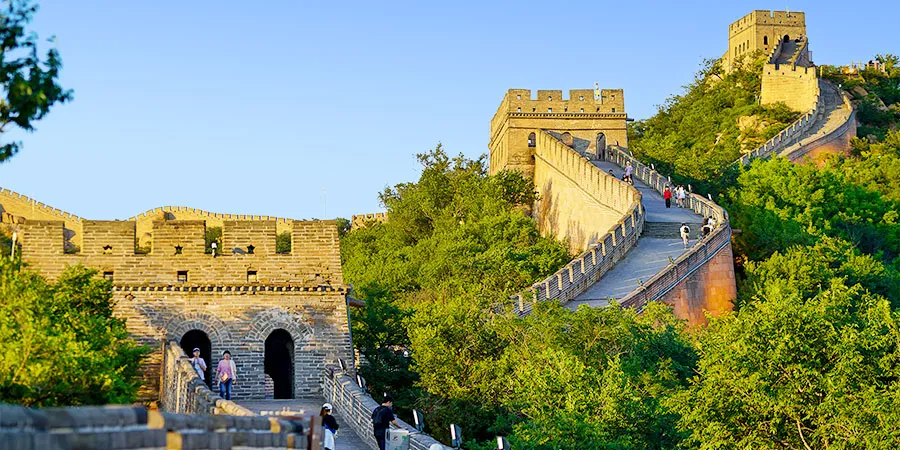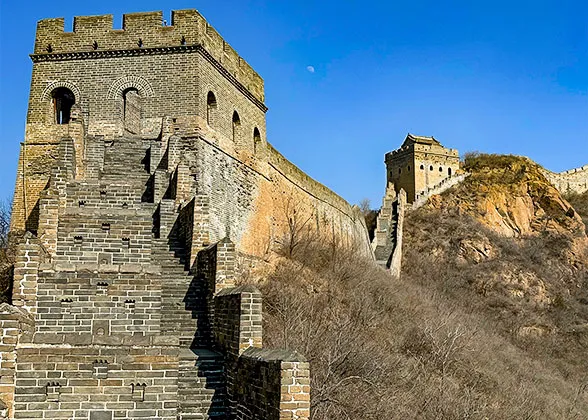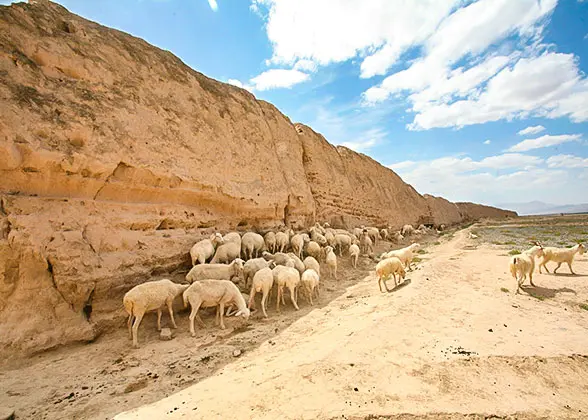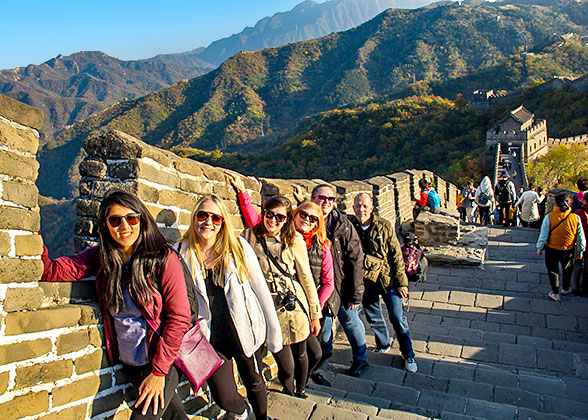15 Fun Facts about the Great Wall of China
1. The Great Wall is more than just a wall.
It is named a ‘Wall’, but actually it is not only a simple ‘Wall’. Historical facts show that it was a comprehensive fortification, consisting of overlapping walls and trenches for blocking enemies, watchtowers and beacon towers for signals and communication, fortresses for head-on battles, and barracks to accommodate soldiers. During the Ming Dynasty, a well-designed array of fortifications such as the Three Inner Passes of Daoma, Zijing, and Juyong, and the Three Outer Passes of Pianguan, Ningwu, and Yanmen, formed a solid defense for the capital city of Beijing.
2. The Great Wall is not a continuous structure.
The Great Wall is not a complete and continuous defense line but rather a combination of multiple discontinuous walls, mountain cliffs, rivers, and fortifications. For instance, the section of the Great Wall near Ningxia mainly relies on the natural barrier of the Yellow River. Additionally, different dynasties built their own separate sections of the Great Wall in various regions, which could be hundreds of kilometers or even further apart from each other.
3. The well-preserved Great Wall is located in Beijing.
The well-preserved sections of the Great Wall are mostly located in the suburbs within a 1 to 2-hour drive from downtown Beijing, including the most famous Badaling Great Wall and Mutianyu Great Wall, which is the most popular among international tourists.
4. The Great Wall has more uses than just defending against enemies.
Beyond its military significance, the Great Wall served various other purposes. In ancient times, apart from being a defense line against foreign invasions, the Great Wall was also an important means of information transmission, such as the beacon tower system used for urgent military communication. Furthermore, prosperous trade and cultural exchanges developed along its route, integrating it into the ancient Silk Road and driving economic growth and cultural fusion in the surrounding regions.
5. The Great Wall comes in different colors.
Due to the differences in location, climate, and construction materials, the Great Wall presents various colors. For instance, the brick-built Ming Dynasty sections in Hebei and Beijing are mostly grayish-brown. In the northwest desert areas, it is mostly made of compacted yellow earth, thus appearing yellow. Some well-preserved stone sections, after thousands of years of weathering and covered with moss, show colors ranging from light green to dark green.
|
|
6. The Great Wall is not visible from space.
The claim that “the Great Wall can be seen with the naked eye from space” is actually a misunderstanding. According to the testimony of astronauts, even from low Earth orbit, the Great Wall is not particularly conspicuous.
7. No workers were buried in the Great Wall.
Although legends or dramas such as “Meng Jiangnu's Bitter Weeping” are widely spread, there is no evidence that workers who died during the construction of the Great Wall were buried within the walls. Historians believe that although the working conditions for building the Great Wall were extremely harsh, with workers often exposed to extreme heat, cold, and other dangers, there are no historical records of anyone being buried within the walls. As an important national defense project at that time, such a situation would not have been allowed. Workers and soldiers who died during the construction process should have been properly buried according to the customs of that time.
8. Glutinous rice was used in the construction of the Great Wall.
During the construction of the Great Wall, some of the “adhesive” inside the walls was glutinous rice paste, which has extremely strong adhesive properties. Even today, this ancient building technique can still be seen in some places.
9. Today, 90% of the Great Wall is wild.
At present, less than 10% of the Great Wall has been restored and developed into scenic spots for tourists to visit. The remaining over 90% of the Great Wall is in its original state, unprotected, winding along mountain ridges and showcasing its ancient allure.
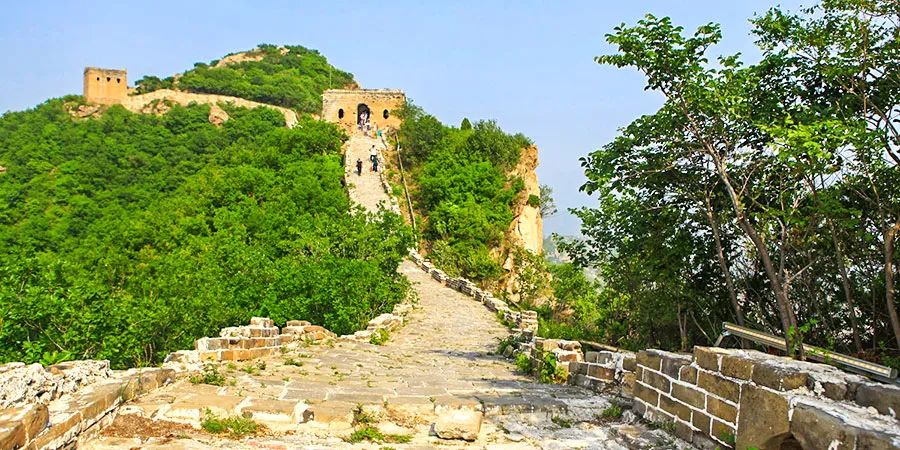 |
| The wild Great Wall |
10. Beacon towers conveyed information through more than just lighting fires.
Beacon towers were spaced throughout the Great Wall to monitor enemy activity and rapidly transmit information using a set of “beacon codes - Feng & Huo in Chinese”. “Feng” signals were used during the day, using smoke; “Huo” signals were used at night, using flames. Additionally, there were various other signaling methods: for example, flags made of different colored cloth, each signifying a distinct message, were typically used to indicate safety. On cloudy or rainy days, drums or cannons were employed to convey military intelligence.
11. The design of arrow windows follows precise mathematical rules.
In the Ming Dynasty, the width of arrow windows was uniformly 0.6 meters (2 feet), the height was 1.8 meters (6 feet), and the inclination angle was 12 degrees, which optimized the shooting range and reduced wind resistance.
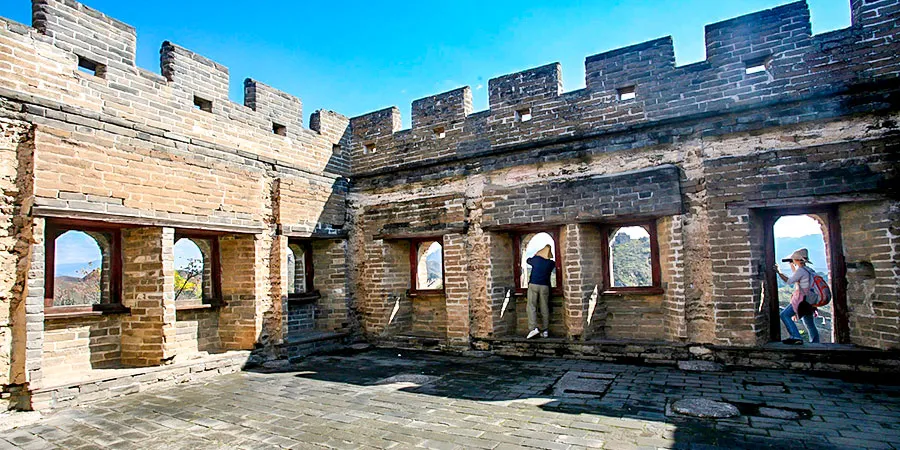 |
| Arrow Windows on the Great Wall |
12. It was not built for beating back Mongols.
The wall construction commenced in the 7th century BC and was first linked up to a defensive line in around 210 BC, much earlier than the rise of the Mongols in the 11th century AD. At that time, the main threat came from the Huns, so the Great Wall was not built to repel the Mongols. Intense conflicts between the Central Plains and the Mongols occurred in the late 14th century, after which the Ming Dynasty drove the Mongols out of the Central Plains.
13. It didn't always succeed in keeping out invasions.
For thousands of years, the Great Wall to some extent acted like both a physical and mental barrier between the central Chinese Empire and the barbarian northern nomads, but this only worked for the underdog. Several strong nomadic tribes in history had managed passage across the barrier. For instance, in the 13th century, the Mongols led by Genghis Khan breached the wall and subjugated north and central China for nearly 100 years; in 1644, the Manchus entering from Shanhaiguan resulted in the collapse of the Ming Dynasty.
14. The Great Wall area is home to rare and endangered species of flora and fauna.
The Great Wall and its surrounding regions are recognized as a biodiversity hotspot, hosting approximately 1,000 plant species and over 300 animal species, many of which are rare or endangered. These include iconic species like the golden antelope, Chinese goral, black-necked crane, and snow leopard.
15. The Great Wall is safeguarded by plants.
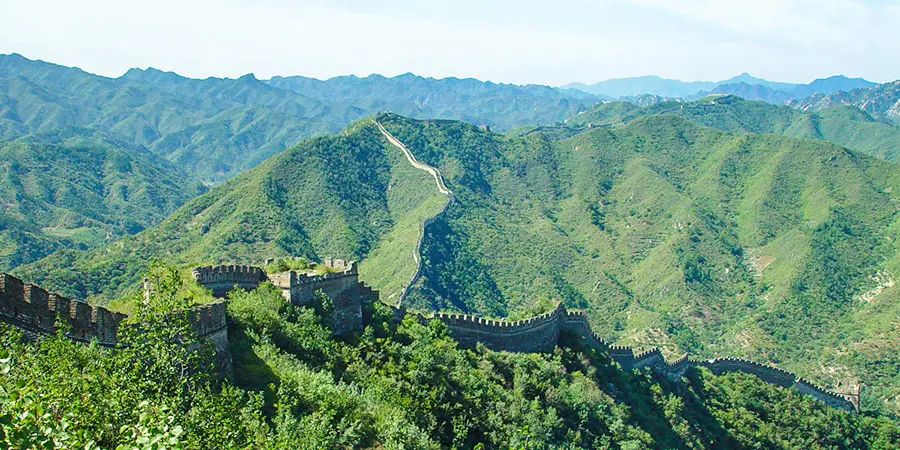 |
| The Great Wall protected by plants |
Studies indicate that the “biological crust” formed by mosses, lichens, and cyanobacteria exerts a protective effect on the Great Wall. Contrary to the common misconception that these plants gradually erode the bricks and stones, they actually shield the structure from wind and rain erosion. Covering the Great Wall's surface, they form a layer of “living skin,” minimizing water infiltration into the wall's interior and thereby effectively slowing down its deterioration, which positively contributes to preserving the wall's structural integrity.
You may like:
- 30 Great Wall of China FAQs
- Great Wall of China Facts for Kids
- 10 Interesting Figures of the Great Wall
- How to Visit the Great Wall of China - Plan a Perfect Day Trip
- Best Time to Visit Great Wall of China
Recommended Tours
- Last updated on Aug. 08, 2025 by Sherry Xia -
